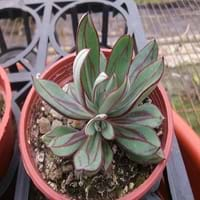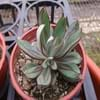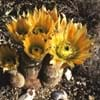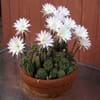Life Span
Perennial
Perennial
Type
Cactus or Succulent
Flowering Plants
Origin
Mexico
Not Available
Types
Not available
Aconitum napellus
Number of Varieties
Not Available
Habitat
Mountain forests, subtropical regions
Damp shady woods, meadows
USDA Hardiness Zone
Not Available
12-15
Sunset Zone
8, 9, 12, 13, 14, 15, 16, 17, 18, 19, 20, 21, 22, 23, 24
21, 22, 23, 24
Habit
Clump-Forming
Oval or Rounded
Minimum Height
Not Available
Minimum Width
Not Available
Flower Color
Yellow
Yellow
Flower Color Modifier
Not Available
Not Available
Fruit Color
Not Available
Green
Leaf Color in Spring
Purple, Light Green, Gray Green, Burgundy
Not Available
Leaf Color in Summer
Purple, Light Green, Gray Green, Burgundy
Not Available
Leaf Color in Fall
Purple, Light Green, Gray Green, Burgundy
Not Available
Leaf Color in Winter
Purple, Light Green, Gray Green, Burgundy
Not Available
Leaf Shape
Rosette
Compound
Plant Season
Spring, Summer, Fall, Winter
Not Available
Sunlight
Full Sun, Partial Sun
Not Available
Growth Rate
Medium
Very Slow
Type of Soil
Loam, Sand
Not Available
The pH of Soil
Acidic, Neutral, Alkaline
Not Available
Soil Drainage
Well drained
Not Available
Bloom Time
Summer, Late Summer, Early Fall
Spring
Repeat Bloomer
Yes
Not Available
Tolerances
Drought
Not Available
Where to Plant?
Container, Ground, Pot
Ground
How to Plant?
Leaf Cutting, Root Division, Stem Cutting
reseeds
Plant Maintenance
Medium
Medium
Watering Requirements
Does not require regular watering, Keep the Soil well drained
Do not let dry out between waterings
In Summer
Lots of watering
Lots of watering
In Spring
Moderate
Moderate
In Winter
Average Water
Average Water
Soil pH
Acidic, Neutral, Alkaline
Not Available
Soil Type
Loam, Sand
Not Available
Soil Drainage Capacity
Well drained
Not Available
Sun Exposure
Full Sun, Partial Sun
Not Available
Pruning
Remove damaged leaves, Remove dead branches, Remove dead leaves
Remove damaged leaves, Remove dead branches, Remove dead leaves
Fertilizers
All-Purpose Liquid Fertilizer
All-Purpose Liquid Fertilizer
Pests and Diseases
Not Available
Red blotch
Plant Tolerance
Drought
Drought
Flowers
Showy
Not Available
Flower Petal Number
Single
Single
Fragrant Flower
No
Not Available
Fragrant Fruit
No
Not Available
Fragrant Leaf
No
Not Available
Fragrant Bark/Stem
No
Not Available
Showy Foliage
Yes
Not Available
Showy Bark
No
Not Available
Foliage Texture
Bold
Bold
Foliage Sheen
Not Available
Not Available
Invasive
No
Not Available
Self-Sowing
No
Not Available
Attracts
Not Available
Hummingbirds
Allergy
Not Available
poisonous if ingested, Toxic
Aesthetic Uses
Beautification, Showy Purposes, Used for decorating walls, fences, gates, hedges, etc.
Not Used For Aesthetic Purpose
Beauty Benefits
Not Available
Not Available
Environmental Uses
Air purification
Air purification
Medicinal Uses
Not Available
Analgesic, Anodyne, Diaphoretic, Homeopathy, Used as a sedative
Part of Plant Used
Not Available
Root
Other Uses
Decoration Purposes, Used as Ornamental plant, Used for Landscaping
Not Available
Used As Indoor Plant
Yes
No
Used As Outdoor Plant
Yes
Yes
Garden Design
Container, Hanging Basket, Houseplant, Rock Garden, Wall, Tropical
Not Available
Botanical Name
ECHEVERIA nodulosa
Aconitum
Common Name
Painted Echeveria, Painted lady
aconite, monkshood, wolf's bane, leopard's bane, mousebane, women's bane, devil's helmet, Queen of all Poisons, blue rocket
In Hindi
Painted Echeveria
बच्छनाभ
In German
Lackierte Echeveria
Eisenhut
In French
Painted Echeveria
Queen of all Poisons
In Spanish
pintado señora
Queen of all Poisons
In Greek
ζωγραφισμένο κυρία
Queen of all Poisons
In Portuguese
Pintado Echeveria
Queen of all Poisons
In Polish
malowane lady
Tojad
In Latin
Aeonium Painted
Queen of all Poisons
Phylum
Tracheophyta
Tracheobionta
Class
Magnoliopsida
Magnoliopsida
Order
Saxifragales
Ranunculales
Family
Crassulaceae
Cactaceae
Clade
Angiosperms, Core eudicots, Eudicots
Angiosperms, Eudicots
Subfamily
Sedoideae
Not Available
Season and Care of Painted Lady and Queen of all Poisons
Season and care of Painted Lady and Queen of all Poisons is important to know. While considering everything about Painted Lady and Queen of all Poisons Care, growing season is an essential factor. Painted Lady season is Spring, Summer, Fall and Winter and Queen of all Poisons season is Spring, Summer, Fall and Winter. The type of soil for Painted Lady is Loam, Sand and for Queen of all Poisons is Not Available while the PH of soil for Painted Lady is Acidic, Neutral, Alkaline and for Queen of all Poisons is Not Available.
Painted Lady and Queen of all Poisons Physical Information
Painted Lady and Queen of all Poisons physical information is very important for comparison. Painted Lady height is 10.20 cm and width 30.50 cm whereas Queen of all Poisons height is Not Available and width Not Available. The color specification of Painted Lady and Queen of all Poisons are as follows:
Painted Lady flower color: Yellow
Painted Lady leaf color: Purple, Light Green, Gray Green and Burgundy
Queen of all Poisons flower color: Yellow
- Queen of all Poisons leaf color: Not Available
Care of Painted Lady and Queen of all Poisons
Care of Painted Lady and Queen of all Poisons include pruning, fertilizers, watering etc. Painted Lady pruning is done Remove damaged leaves, Remove dead branches and Remove dead leaves and Queen of all Poisons pruning is done Remove damaged leaves, Remove dead branches and Remove dead leaves. In summer Painted Lady needs Lots of watering and in winter, it needs Average Water. Whereas, in summer Queen of all Poisons needs Lots of watering and in winter, it needs Average Water.





